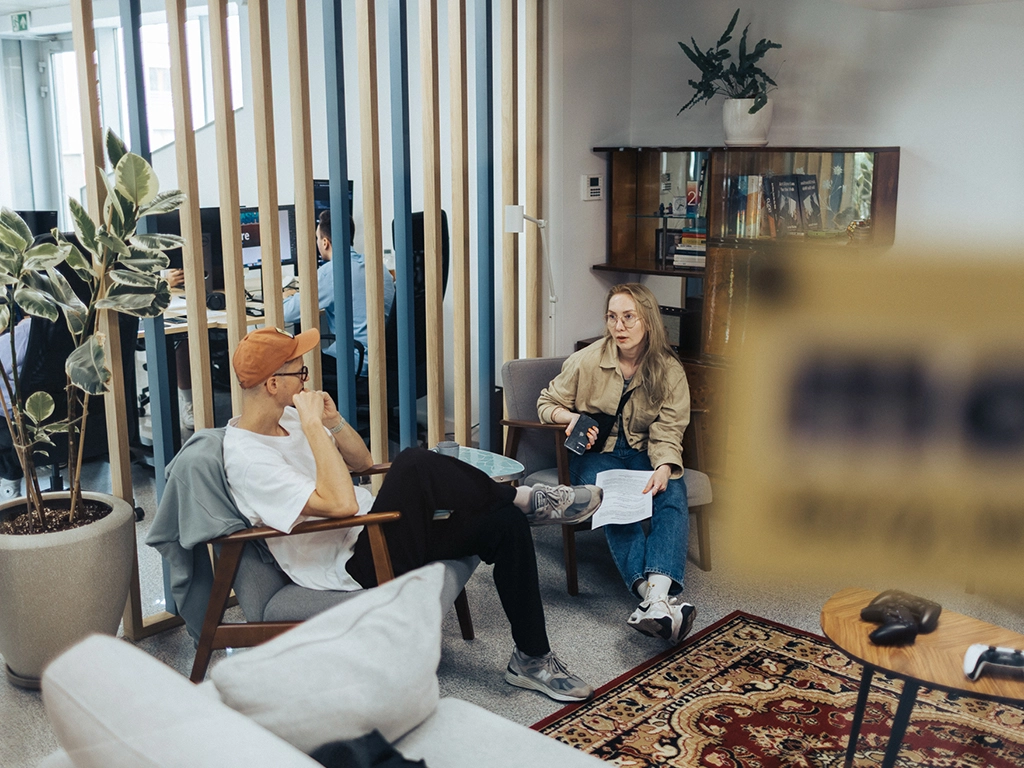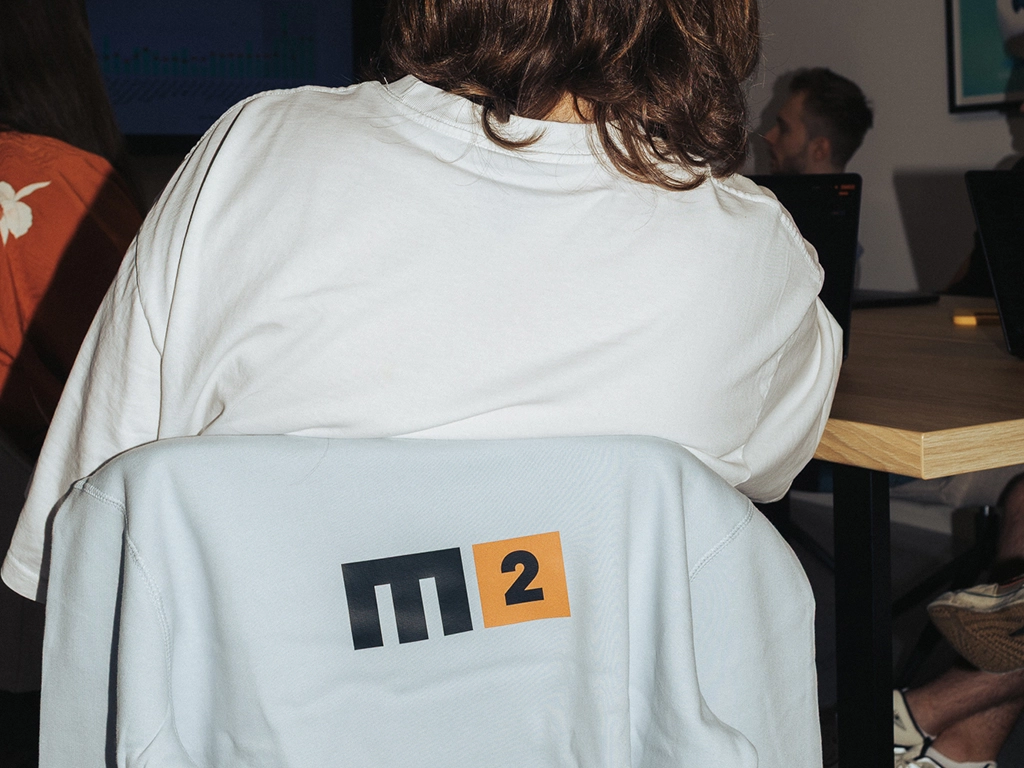Mobile Product Design Ideas, Examples & Inspirations (2024)
Table of Contents
Whether you’re crafting an app or refining a seasoned portfolio, the right mobile app design can make all the difference. This article serves as your gateway to a wealth of mobile product design ideas, inspirations, and practical examples. I've also included useful design guidelines to help you create visually appealing and easy-to-use mobile applications. So, let’s get started and see how these ideas can inspire and shape your next mobile app.
Mobile Product Design — Everything Starts With an Idea
Every creation starts with a spark — an idea. These sparks can come from almost anywhere: a movie that moves us, someone who inspires us, or even an existing idea that we refine and make our own. It's these ideas that drive us to innovate and create new things.
The journey from concept to reality is a time-honored process that hasn’t changed much over millennia, and digital products follow the same path. Every piece of software, every app, and every widget began as a simple idea that fueled its creator through each stage of development until its final release.
Mobile product design is a broad field that spans everything from initial concepts to the beginning of the development process. It involves the germination of ideas in designers' minds, endless brainstorming sessions, and refining these concepts into polished, market-ready products.
This phase considers everything from understanding the target audience and crafting a business strategy to planning in-app payments — all before the actual development kicks off. It encompasses numerous smaller steps, such as conducting user research, analyzing competitors, designing prototypes, and strategizing marketing efforts.
So, let’s delve into some of the most iconic mobile product designs and explore the stories behind their creation. If you’re more interested in the nuts and bolts of product development rather than the design aspect, check out our article on product development.
Mobile App Development Life Cycle: 6 Stages & Process Flow
Mobile App Design Examples and Inspirations
Ready to see theory put into practice? I showcase a variety of innovative mobile app designs that bring creative ideas to life.
Inspiration: I Need a Solution to My Problem
Finding solutions to the problems we encounter on a daily basis is an instinct for every human being. When we run into a challenge, looking for solutions just comes naturally. Many famous products were born this way — someone trying to solve a personal problem ended up creating something that turned out to be useful for others too.
Example 1. Vinted — Milda Had an Idea to Sell Her Clothes
Vinted has become an unmissable phenomenon across Europe as the first platform of its kind for swapping and selling second-hand clothing and shoes. What started as a small idea in Lithuania has now expanded into sixteen countries, including the US, the UK, Germany, and France, with plans to keep growing.
So, how did this thriving business begin? It all started when co-founder Milda Mitkute was moving between apartments and realized she had too many clothes. She wanted a way to sell or give them away, so she turned to her friend Justas Janauskas, a programmer. Justas helped her by creating a basic website where she could list her clothes.
It wasn’t perfect at first — they even forgot to include a "buy" button. But as word spread, more and more people signed up to sell their own clothes and shoes, driving the platform's rapid expansion. Eventually, this growth caught the eye of an angel investor in 2011, whose investment propelled Vinted to become the globally recognized brand it is today.
Example 2. Facebook — Mark's College Project Turns Global
Facebook, which later evolved into the powerhouse company Meta, began almost as a prank by its founder, Mark Zuckerberg. The name itself was inspired by the directories handed out to college students — a sort of "face book."
Originally, Zuckerberg created Facebook as a digital directory for Harvard students because he was tired of waiting for the university to create one. In just a week, he developed his own version, which launched as "TheFacebook”. On its debut night, over 650 students signed up. Its popularity skyrocketed as more colleges joined, especially after it added a messaging feature.
Eventually, it was renamed "Facebook" and opened to the general public in 2006, marking the start of its journey to becoming a global social media giant.
Example 3. Just Eat Takeaway — Solving Jitse's Food Ordering Frustration
The journey of Just Eat Takeaway began in the Netherlands in 2000 when Jitse Groen realized ordering food was more problematic than it should be. This challenge led him to see a greater demand for food delivery services, sparking the creation of Takeaway.com.
In the early days, promoting an internet-based food delivery service was tough because not many households were online. Despite these challenges, Groen held onto his belief in the service's potential. His faith paid off — by 2003, as broadband became more common, the platform's user base surged, prompting Groen to drop out of college to focus on the business full-time.
The company's growth continued steadily, and 12 years after its launch, it secured its first major funding. This boost in resources and reach culminated in a merger with one of its biggest competitors. Just Eat primarily served the UK and Mediterranean markets, so merging with them not only eliminated a rival but significantly expanded their market presence, transforming the food delivery landscape.
Example 4. Revolut — Nikolay's Travel Payment Troubles Lead to Innovation
Revolut's journey began in 2015, sparked by co-founder Nikolay Storonsky's frustrations with high fees and poor exchange rates during his frequent travels. Faced with the challenge of making affordable international payments, Storonsky realized he wasn't alone in his struggles. Unable to find an existing solution that met his needs, he teamed up with Vlad Yatsenko, a skilled developer with expertise in banking systems, to create their own.
Their collaboration led to the creation of Revolut, a digital banking alternative designed to simplify global spending and transfers. The company quickly secured its initial funding and grew fast, becoming a favorite in Europe for its transparency, low fees, and attractive exchange rates.
Inspiration: Trying to Make the World Better
Many projects begin with a noble goal — to leave the world a little better than we found it. This powerful idea serves as endless inspiration for those looking to make a positive impact.
Example 1. Spotify — Daniel and Martin's Answer to Music Piracy
Spotify was born out of a need to combat music piracy. At the time, online music streaming platforms didn't exist, and mp3 file sharing was rampant. CDs were still the primary way to listen to music, but they weren't convenient for travel — portable CD players were costly and fragile. Moreover, as MP3 players emerged, many CDs hadn't been converted to digital formats yet, creating a gap that pirates quickly exploited.
To tackle this issue, Ek and Lorentzon introduced Spotify, a free music streaming service supported by ads. Its convenience and accessibility made it an instant hit, leading to the introduction of a subscription option for an ad-free experience. Today, Spotify stands as the most popular music streaming service globally, significantly reducing piracy in the industry.
Example 2. Duolingo — Luis Believes Learning English Can Open Doors
Everyone recognizes Duolingo's iconic green owl, always reminding users to "keep up their streak." By the end of 2022, this popular language-learning app boasted 54 million users diving into 43 different languages — from widely spoken ones like English and Spanish to the unique Zulu and Navajo, and even fantasy tongues like High Valyrian and Klingon.
Duolingo's founder, Professor Luis von Ahn, was already known in the tech world as the creator of reCAPTCHA, a widely-used anti-bot solution he sold to Google. Drawing from his personal experiences growing up in Guatemala, von Ahn saw firsthand the challenges young people faced when learning English — high costs and inconsistent results.
He realized that without his own English skills, his career opportunities would have been severely limited. Motivated by this, he teamed up with Severin Hacker, a former student who shared his vision for free, accessible education. Together, they launched Duolingo as a friendly, free way for anyone around the world to learn a new language.
Inspiration: Outperforming the Competition
Sometimes, the push to create isn't about solving a specific problem — it's about doing it better than anyone else. This desire to outshine competitors has sparked the creation of many popular mobile apps.
Example 1. Snake — The Classic Game Born From a Tetris Setback
Who hasn't played the charmingly simple game of Snake? It's a timeless classic that bridges generations with its straightforward rules and minimalist design.
But how did Snake make its way onto mobile phones? It all started with the launch of the Nokia 6110. Nokia wanted to add a fun element to their new phone. Initially, they approached The Tetris Company to include Tetris, but the deal didn't work out — plus, Tetris was already featured on one of Nokia’s main competitors, the Hagenuk MT-2000.
After this setback, Nokia turned to their developer, Taneli Armanto, who was tasked with creating a game that was simple and required minimal memory. The result was the Snake game we know and love today.
Example 2. KakaoTalk — Korea’s Own WhatsApp
While KakaoTalk might not be a household name globally, it's a giant in South Korea. Kakao Corp launched KakaoTalk in 2010, riding the wave of the smartphone boom that swept through Korea the previous year. Interestingly, 2009 was also the year WhatsApp debuted in America.
Though the founders of KakaoTalk haven't specifically credited WhatsApp's launch as their catalyst, their timing was perfect for establishing a strong local brand just as smartphones were becoming ubiquitous in Korea. Given the Korean preference for domestic products, KakaoTalk's user base grew rapidly — from one million users in September 2010 to nearly five million by December of the same year.
WhatsApp is available in South Korea, but it hasn't achieved the same level of popularity as in other countries, and KakaoTalk dominates the local market.
Inspiration: Innovative Evolution
Sometimes, the most inspiring part of a product isn't just its success but how it evolves over time. This evolution can be a natural progression driven by advances in technology or a strategic shift in response to challenges or market changes.
A key term to understand in the context of a product’s evolution is "pivot." Originating from baseball, where it describes a player's quick change in direction, "pivot" in the business world refers to a company making a strategic shift to better meet market needs or to test new hypotheses. Pivoting can involve anything from a slight tweak in product features to a complete overhaul of a company’s direction. This flexibility can be crucial for adapting to new challenges and opportunities.
Example 1. Discord — From Game Feature to Gaming Communication Hub
Discord, now a cornerstone in virtually every gaming community, has revolutionized how gamers worldwide connect through live and voice chat. It has become the go-to platform for assembling friends and meeting new people with similar interests.
The origin of Discord might surprise you. It all began in a modest game development studio run by Jason Citron and Stan Vishnevsky. While the studio had launched a few games without much success, one feature within a game caught everyone's attention — a built-in voice chat. Citron, a gamer himself, noticed the difficulties his team faced communicating in strategy-dependent multiplayer games. Commonly used VoIP services often had delays, and other platforms like Skype or Teamspeak weren't tailor-made for gamers.
Recognizing the potential of this feature, Citron transformed the simple in-game voice chat into a standalone product designed specifically for gamers. Discord quickly became a market favorite thanks to its user-friendly interface and free access, making it easier and more enjoyable for gamers to stay connected.
Example 2. Netflix: From Mailing DVDs to Becoming Streaming Giants
Netflix's journey from a DVD rental service to a streaming powerhouse is a true tale of adaptation and growth. The service originally allowed customers to order DVDs online, which were then mailed to their homes. On its very first day, demand was so high that it crashed their servers.
Recognizing the potential, founders Reed Hastings and Marc Randolph introduced a subscription model — for about $20 a month, customers could watch unlimited movies, with the only limit being how many DVDs they could hold at one time, as they needed to return one to receive another.
As the internet gained traction, Netflix secured digital licenses and, by 2010, launched its first digital-only subscription plan. The rise of the internet and the decline of DVD usage paved the way for Netflix to evolve into the streaming titan we know today.
Don't miss our other article on app subscription plans for more insights.
Subscription Business Models In Digital Products - Examples
Where Does Inspiration Come From? A Look Inside Memory Squared
At Memory Squared, we've developed numerous products, both for ourselves and our clients, sparking curiosity about where inspiration truly originates for our product designers. To find out, we hosted a brainstorming session. The consensus? Inspiration can strike anywhere, anytime — even on vacation.
”Being a product designer means always being ready for that sudden spark of creativity.
Many of our designers find inspiration through their own experiences. Observing everyday challenges and discovering effective solutions is a wellspring of ideas. For instance, our product, Menufolio, came to life after one of our designers, who specialized in utility graphics, noticed the challenges restaurants faced with their menus. The need for frequent updates often made menus messy and visually unappealing. After sharing this insight, we all agreed it was a challenge worth addressing, and thus, the design for Menufolio was born.
Another surprising source of inspiration can be the design elements themselves. One designer mentioned how scrolling through a list of fonts might trigger an idea for a new project, showing how accidental discoveries can lead to creative breakthroughs. Additionally, market trends often guide our ideas. When a particular type of app gains demand, it prompts us to think about improvements or new creations that cater to emerging needs.
Technological advancements also play a crucial role. New programming capabilities and devices compel us to imagine fresh functionalities for our apps. For example, the rise of smartwatches has spurred entirely new categories of applications. And with emerging technologies like Virtual Reality and Generative AI, the possibilities for future innovations are boundless.
At Memory Squared, we believe any idea can evolve into a successful product. It might require adjustments, a strategic pivot, or deep exploration, but there's no success without an intensive design phase. If you have an idea, don't hesitate to reach out for a consultation. We're here to help you navigate the exciting journey from concept to creation.
Bonus: Mobile App Design Guidelines
Building a successful mobile app goes beyond having great ideas — it's all about mastering the essentials of mobile product design that make your app both useful and attractive. In this section, we'll explore essential guidelines that are key to crafting top-notch mobile apps:
- Simplify user interface (UI). A clutter-free UI enhances user engagement and understanding. Keep interface elements minimal and only present users with essential information, utilizing techniques like progressive disclosure to gradually reveal more options.
- Enhance user experience (UX). Prioritize a seamless UX by minimizing cognitive load. Break tasks into smaller, manageable steps and use familiar screen designs to reduce the learning curve for new users.
- Optimize interactions. Design with the mobile context in mind. Make forms short, use input masks, and dynamically validate field values to reduce errors. Customize the keyboard based on the type of input required to streamline user actions.
- Anticipate user needs. Proactively integrate features that predict and address user needs, enhancing the overall functionality and appeal of the app.
- Maintain consistency. Ensure visual, functional, and external consistency across the app to keep the user experience coherent and intuitive. Adhere to platform guidelines like Apple’s Human Interface Guidelines or Google’s Material Design to maintain an interface that feels familiar to users.
- Manage navigation. Make navigation intuitive and accessible using standard components and visible navigational aids. Clearly indicate the user’s current location within the app to prevent disorientation.
- Use animation wisely. Employ functional animation to clarify transitions and interactions, making the app feel more responsive and easier to understand.
- Ensure accessibility. Design inclusively by considering users with disabilities. Implement features like color-blind mode and optional animations to accommodate all users.
FAQs on Mobile Product Design
What is the best mobile app design software?
One of the best mobile app design software options out there is Adobe XD. It’s popular for its smooth integration with other Adobe Creative Cloud apps, its ability to prototype and wireframe quickly, and its user-friendly interface that makes it accessible for both beginners and professionals.
Sketch and Figma are also highly recommended for mobile app design. Sketch is great for its powerful vector editing and user interface design capabilities, while Figma stands out for its collaborative features, allowing teams to design together in real time. Each of these tools offers unique strengths, making them favorites among designers for creating sophisticated and user-friendly mobile apps.
Are free mobile app design templates useful?
Yes, free mobile app design templates can be useful, especially for beginners or developers under tight deadlines. They offer a ready-made framework that can save time and provide inspiration, allowing designers to focus on customization and adding unique features to enhance the app's functionality and aesthetic appeal.
However, they do come with some drawbacks. These templates can be somewhat generic and may not fully align with your specific brand identity or functional needs. Over-reliance on templates might also limit creativity and innovation since the design is not tailored from scratch to the specific user experience you may want to offer.
If you aim for a unique, professional, and high-quality app that stands out in the market, outsourcing your mobile app design to a professional company is a good idea. This allows you to benefit from expert designers who can craft a customized and cohesive design that aligns perfectly with your brand and meets your specific business goals.
Memory Squared

Trusted by both innovative startups and large international companies.

Awarded as one of the best 2024 software companies globally
What we do
We can cover the whole process and product development life cycle but we’re also open to sending our developers and designers on a mission to join your team. We’re comfortable working closely with business managers to creatively place digital products into their strategy.








